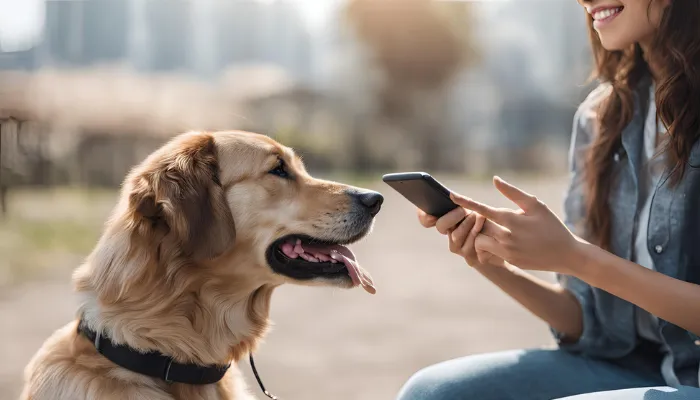Few questions tug at the heartstrings of dog owners like, How Do Dogs Say “Goodbye”? Their emotions are expressed in subtle ways, be it a simple departure for work or a final goodbye. Can a dog translator help decode these emotions?
Learning these signals helps respond to dogs with empathy and strengthens the bond created with them. This article delves into behaviors, instincts, and science of how dogs tend to say goodbye and their emotions.

Different Ways Dogs Say Goodbye
How Do Dogs Say “Goodbye”? Dogs use consistent actions to express farewell, whether temporary or permanent. Below is a breakdown of common goodbye behaviors and their meanings:
| Behavior | Description | Possible Meaning |
|---|---|---|
| Lingering Gazes | Staring intently at you before you leave | Seeking connection, reassurance |
| Following You Around | Sticking close pre-departure | Anxiety, desire to stay near |
| Physical Contact | Leaning, nudging, or pawing | Comfort-seeking, affection |
| Changes in Routine | Unusual behavior (e.g., refusing treats) | Stress or anticipation of separation |
| Vocalizations | Whining, barking, or howling | Expressing distress or protest |
These behaviors reflect a dog’s attempt to navigate their emotions and communicate their needs.
Saying Goodbye at Life’s End
Goodbye rituals often become more pronounced for dogs when they sense that the end is near. How Do Dogs Say “Goodbye”? Common end-of-life behaviors are:
- Seeking solitude: Withdrawing to quiet spaces.
- Increased affection: Clinginess or gentle licks.
- Loss of appetite: Disinterest in food or play.
Dogs are known to “visit” the people or places they love most as a final gesture of love, and Veterinarians notice this habit too. Understanding these symptoms helps owners to ensure comfort and closure.
How to Respond to Your Dog’s Goodbye?
Figuring out the reasons behind your dog’s goodbye behavior is only a piece of the puzzle. How Do Dogs Say “Goodbye”? Responding to their exit behavior matters just as much. Here’s how you can help your canine friend cope with farewells:
- Stay calm and composed: Always bear in mind that dogs are very sensitive to human emotions, which means you should always make sure to avoid dramatic or emotional exits. A calm demeanor tends to reassure them.
- Offer reassurance: Soothing their anxiety can be made easy by hugging, patting, or just simply comforting them with words.
- Create positive associations: Treats or toys can help make departures less annoying and adding them before stepping out can help.
- Stick to routines: Dogs tend to feel more secure when there are set,consistent routines and schedules.
- Practice short separations: Begin practicing by slowly increasing the time you’re away from them to help them adjust.
When giving your dog end-of-life goodbyes shifts the focus towards comfort:
- Share some quiet moments together.
- Speak with a veterinary doctor on pain management procedures.
- Constantly remind them of the love you have for them through gentle touches and words.
By responding to your dog’s goodbye effectively, you strengthen the bond between the two of you which makes sure he feels safe and cherished at all times regardless of the situation.
Conclusion
So, How Do Dogs Say “Goodbye”? Through tender gazes, loyal shadows, and silent acts of love. By tuning into their cues, we honor their loyalty and deepen our connection.
Whether it’s a brief separation or a lasting farewell, understanding these gestures helps us reciprocate their devotion. Next time your dog lingers by the door, remember: their goodbye is their way of saying, “You matter to me.”
